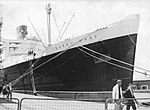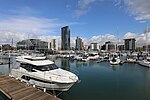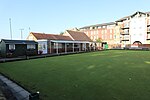National Oceanography Centre, Southampton

The National Oceanography Centre Southampton (NOCS) is a centre for research, teaching, and technology development in Ocean and Earth science. NOCS was created in 1995 jointly between the University of Southampton and the UK Natural Environment Research Council and is located within the port of Southampton at a purpose-built dockside campus with modern facilities. In 2010 the university and NERC components demerged, and the NERC-managed component became the National Oceanography Centre (NOC – with the Proudman Oceanographic Laboratory in Liverpool). The two components of NOCS continue close collaboration through the jointly run Graduate School, shared research facilities and laboratories, complementary research groups, and many joint research grants and publications. The university component “Ocean and Earth Science, National Oceanography Centre Southampton” (OES) is part of the Faculty of Environmental and Life Sciences, (FELS). It was ranked 46th in the world for Earth and Marine Sciences by the QS World University Rankings in 2019.In November 2019, NOC became formally independent from the NERC and now operates as a company limited by guarantee with charitable status.
Excerpt from the Wikipedia article National Oceanography Centre, Southampton (License: CC BY-SA 3.0, Authors, Images).National Oceanography Centre, Southampton
Tasman Close, Southampton Ocean Village
Geographical coordinates (GPS) Address Nearby Places Show on map
Geographical coordinates (GPS)
| Latitude | Longitude |
|---|---|
| N 50.892777777778 ° | E -1.3948055555556 ° |
Address
Waterfront Campus
Tasman Close
SO14 3TP Southampton, Ocean Village
England, United Kingdom
Open on Google Maps








